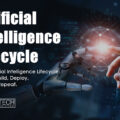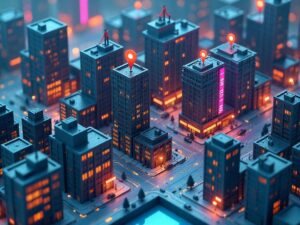Introduction: The New Frontier of Visual Computing
For decades, 3D content creation has been a blend of artistic skill and technological prowess. From the earliest wireframe models to today’s hyper-realistic CGI, the journey has been driven by a relentless pursuit of realism. However, every leap forward has also brought increasing complexity. Manual modeling, texturing, lighting, and rendering remain labor-intensive, requiring specialized expertise and extensive resources.
In recent years, Artificial Intelligence (AI) has begun to streamline this process. While tools like generative AI have revolutionized text and image creation, a quieter but equally significant innovation is reshaping 3D content creation—Neural Radiance Fields (NeRFs). This technology leverages AI to generate highly realistic 3D representations of objects and environments from a sparse set of 2D images, significantly simplifying workflows without compromising on quality.
This blog delves deep into NeRFs, tracing their origins, explaining how they work, highlighting real-world applications, addressing challenges, and exploring their future potential. Importantly, it shows how NeRFs represent an evolution of traditional 3D modeling practices rather than a replacement, bridging past expertise with modern AI capabilities.
Understanding Neural Radiance Fields (NeRFs): The Basics
At its core, a Neural Radiance Field is a neural network that models a 3D scene as a continuous function. Given a set of 2D photographs taken from different angles, NeRFs learn to predict the color and density of any point in 3D space when viewed from any direction. This process enables the generation of photorealistic images from viewpoints not present in the original dataset.
How NeRFs Differ from Traditional 3D Modeling
Traditional 3D modeling relies on geometry-based representations: polygons, meshes, and textures meticulously crafted by artists and designers. Rendering techniques like ray tracing simulate light interactions to achieve realism. While powerful, this pipeline demands significant manual input and computing resources.
NeRFs, however, bypass explicit geometry modeling. Instead of defining surfaces and materials, they learn a volumetric representation of the scene, encapsulating how light interacts with every point in space. This approach captures subtle visual phenomena like soft shadows, translucency, and specular reflections more naturally.
Technical Workflow of NeRFs:
- Data Input: Sparse set of 2D images with camera pose information.
- Coordinate Mapping: The model maps 3D coordinates and viewing directions to RGB color and volume density.
- Volume Rendering: Using differentiable rendering techniques, NeRFs synthesize images from novel viewpoints.
- Optimization: Through iterative learning, the model refines its predictions to closely match the ground truth images.
The Traditional Roots of NeRFs: Evolution, Not Revolution
Though NeRFs are powered by cutting-edge AI, they stand on the shoulders of decades of research in computer graphics. Techniques like photogrammetry, light field rendering, and volumetric representations have long been used to reconstruct 3D environments from images.
- Photogrammetry involves deriving 3D information from multiple 2D photographs, relying heavily on feature detection and triangulation.
- Light Fields capture the amount of light flowing in every direction through every point in space, offering rich visual data but requiring dense sampling.
- Volumetric Rendering models how light interacts with semi-transparent materials like smoke or fog.
NeRFs unify these concepts under a neural network framework, achieving similar goals with far less manual intervention and data requirements. By blending these traditional methods with AI’s learning capabilities, NeRFs represent a natural progression rather than a disruptive replacement.
Real-World Applications: Where NeRFs Are Making an Impact

1. Gaming and Virtual Reality (VR)
The gaming industry constantly seeks to create more immersive worlds. Traditional asset creation is both time-consuming and expensive. NeRFs allow developers to capture real-world environments and convert them into explorable 3D spaces with minimal manual modeling. This not only speeds up development but also enhances realism.
In VR, where users can freely move their viewpoint, NeRFs excel by generating accurate visuals from any perspective, offering a more authentic experience without ballooning asset creation costs.
2. E-Commerce and Digital Product Showcases
Online retailers are using NeRFs to create interactive 3D models of products. Instead of static images, customers can now view items from all angles, zoom in on details, and get a better sense of scale and material. This immersive shopping experience increases buyer confidence and reduces product returns.
3. Architecture, Engineering, and Construction (AEC)
NeRFs are streamlining architectural visualization. Traditionally, creating a 3D walkthrough of a building involves extensive CAD modeling and rendering. With NeRFs, architects can quickly generate realistic interior and exterior visualizations from simple photo captures, aiding in design decisions, client presentations, and virtual tours.
4. Cultural Heritage Preservation
Museums and cultural institutions are adopting NeRFs to digitally preserve artifacts and historical sites. Unlike conventional 3D scanning methods that require specialized equipment, NeRFs can reconstruct high-fidelity models from existing photographs. These digital archives support education, research, and virtual exhibitions, ensuring that cultural heritage is preserved for future generations.
5. Film and Media Production
Creating digital environments for movies involves significant effort in set design, modeling, and post-production. NeRFs simplify this by enabling filmmakers to recreate real-world locations digitally with high accuracy. This reduces location dependency, lowers costs, and provides greater creative flexibility in post-production.
6. Medical Imaging and Education
Though still in experimental phases, NeRFs hold potential in medical visualization. By reconstructing 3D models from 2D imaging data (like MRI or CT scans), NeRFs could aid in diagnosis, surgical planning, and medical education, offering interactive 3D visualizations of anatomical structures.
Challenges and Limitations of NeRFs

Despite their impressive capabilities, NeRFs face several practical challenges:
Computational Intensity
Training NeRF models is computationally expensive, requiring powerful GPUs and significant processing time. While innovations like Instant NeRFs by NVIDIA have accelerated this process, real-time applications remain challenging.
Dynamic Scenes and Temporal Changes
NeRFs were initially designed for static scenes. Modeling dynamic environments with moving objects introduces complexity. Emerging research on Dynamic NeRFs is addressing this limitation, but practical solutions are still evolving.
Scalability for Large-Scale Scenes
Reconstructing expansive outdoor environments with variable lighting and weather conditions tests the scalability of NeRF models. Techniques like sparse voxel grids and hierarchical sampling are being explored to mitigate these issues.
Data Privacy and Ethical Concerns
The ability to reconstruct detailed 3D environments from publicly available photos raises privacy concerns. Clear guidelines and ethical standards are necessary to prevent misuse and ensure responsible deployment.
Future Directions: The Road Ahead for NeRFs
The development trajectory of NeRFs points toward broader adoption and enhanced capabilities:
Real-Time Rendering
Ongoing research aims to achieve real-time NeRF rendering, making them viable for interactive applications like VR gaming, live virtual events, and AR experiences.
Integration with Generative AI
Combining NeRFs with generative AI models could allow users to create or modify 3D scenes using simple text prompts or sketches, democratizing 3D content creation even further.
Mobile and Edge Deployment
Optimization efforts are focusing on enabling NeRFs to run on mobile devices and edge computing platforms. This would empower on-the-go 3D scanning and visualization applications.
Standardization and Toolkits
As adoption grows, standardized workflows, APIs, and development toolkits for NeRF-based content creation will emerge, lowering the entry barrier for businesses and individual creators alike.
Industry-Specific Solutions
Tailored NeRF solutions for industries like manufacturing (for digital twins), automotive (for design prototyping), and healthcare (for anatomical modeling) are expected to gain traction.
Why NeRFs Are a Timeless Innovation
In the broader context of technological progress, NeRFs exemplify an ideal blend of tradition and innovation. They do not discard the principles of visual fidelity, spatial accuracy, and artistic intent that have long defined 3D modeling. Instead, they enhance these principles by automating tedious processes and unlocking new creative possibilities.
For businesses and creators, adopting NeRF technology is not about chasing the latest trend. It’s about embracing a more efficient, scalable, and accessible way of creating 3D content—while still upholding the quality and craftsmanship that traditional methods demand.
Conclusion: NeRFs and the Future of 3D Content Creation
Neural Radiance Fields are not merely a technical novelty; they represent a pivotal advancement in visual computing. By simplifying the 3D content creation pipeline, reducing resource dependencies, and enabling photorealistic reconstructions from minimal data, NeRFs are poised to transform multiple industries.
For forward-thinking organizations, now is the time to explore NeRF technology—not just to stay competitive, but to build upon a foundation of traditional excellence with the power of AI-driven innovation.
As computational barriers lower and practical applications multiply, NeRFs will become an indispensable tool in the 3D creator’s arsenal—ushering in a future where high-quality 3D visualization is as accessible as snapping a photograph.












